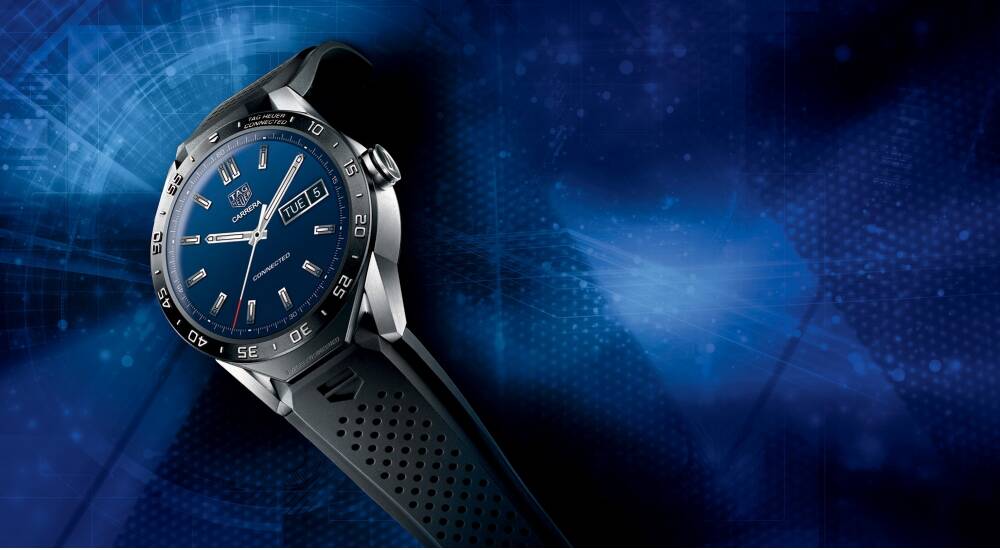Global smartwatch sales have skyrocketed in recent years. So much, it has overtaken Swiss watch sales figures. Could this be the latest threat to the Swiss watch industry? Are we witnessing the start of another crisis; lurking around 40/50 years post the quartz crisis? Could this be called the Smartwatch crisis?

The Quartz Crisis Or Rather Revolution
The watch industry was severely shaken back in the 70’s and 80’s. It started when Japanese watch manufacturer Seiko introduced the world’s first ever quartz watch in 1969, the Seiko Astron. Following Seiko’s release, there was a mass migration by watch manufacturers worldwide towards this particular technology. Shortly after, in 1972, the Hamilton Watch Co. introduced the Pulsar P1, the world’s first ever digital quartz watch.

Prior to quartz movements, watches primarily contained mechanical movements. An art the Swiss were well known to excel at. Unfortunately after a few years of Asian quartz watchmaking dominance, traditional Swiss watchmaking started to take a severe hit.
In just over a decade the number of Swiss watchmakers fell from 1600 to 600 because of quartz watches. Despite revered brands such as Patek Philippe and Omega embracing the technology, there was still some resistance within the Swiss watch community. A community who believed solely in traditional watchmaking. A group of purists thinking the quartz watch was simply a fad.
The crisis however persisted and hence triggered the birth of SWATCH. A brand created in an attempt to save the Swiss watch industry.

The ‘Modern’ Smartwatch
Fast forward some 40 to 50 years later and a new type of watch is growing in popularity. The ‘Modern’ Smartwatch. I say ‘Modern’ because truly speaking, the smartwatch was born during the quartz crisis.
The current smartwatch owes its origins to the Pulsar P1, pictured earlier. A watch which is itself branded as “The Time Computer”. Some other vintage ‘smartwatches’ such as the HP-01 and the Seiko LCD TV watch pictured below are also some form of early smartwatches.

The digital watches of 1970’s and 1980’s laid the foundation for current smartwatches we are now accustomed to. Feature packed wrist devices that can do just about anything a smartphone does. Attending to calls or messages and monitoring your health and fitness. The list simply keeps growing with every major wearable tech release.
Shipment Of Apple Watches
Apple succeeded in marketing a desirable tech commodity to the mass market. Shipping more watches than the whole Swiss watch industry combined in Q4 of 2017. It is rather astonishing for a tech company such as Apple (with only four years experience in watchmaking) overtaking the centuries old Swiss watch industry.
Apple, before being a tech company, is a great marketing company. They leverage all their products to work in harmony with other devices within their own ecosystem. A strategy that has proven to increase brand loyalty which also partly justifies their success in the watch industry.
 2016 – 2017 Apple Watch shipment vs Swiss Watches shipments
2016 – 2017 Apple Watch shipment vs Swiss Watches shipments
Adding the shipment figures of Apple watches to smartwatches from other brands, it is clear that the current smartwatch market has taken the whole Swiss watch industry by storm. Similar to the effects of the quartz watch which triggered the quartz crisis in Switzerland.
Impact On Traditional Watchmaking
Surprisingly, according to a 2017 Deloitte Swiss Watch Industry Study, 72% of Swiss watch industry executives do not perceive Smartwatches as a threat. In fact, 14% see smartwatches more as an opportunity. Despite decreasing volumes, the industry has experienced growth compared to previous quarters and 52% of executives have a positive outlook on the industry for the next 12 months according to the 2017 report.
This resistance on the impact of smartwatch sales by Swiss watch executives somewhat reminds us of the quartz crisis. Much of the Swiss watch industry initially tried to resist the quartz watch in the 70’s and 80’s but accepted its dominance over a decade later.

Some Swiss manufacturers, on the other hand, have already joined the smartwatch hype. TAG Heuer introduced their Connected watch collection in partnership with Intel and Google back in November 2015. Others such as Frédérique Constant have adopted a more horological approach to enter the market.

The Future Of Watchmaking
Are we currently experiencing the wrath of technology destroying the art of watchmaking? Should Switzerland be more cautious of the rise of smartwatches? No matter what the industry is going to look like in the coming decades, one thing is for sure.
Quartz still dominates the watch industry but mostly at the lower spectrum. Luxury watches continue to be made traditionally using mechanical movements with only a handful using quartz for its properties in terms of precision, size or cost.
Now though, there is a strong contender in the wristwatch arena. The smartwatch! And with that the signs of a probable new crisis. The Smartwatch Crisis!




